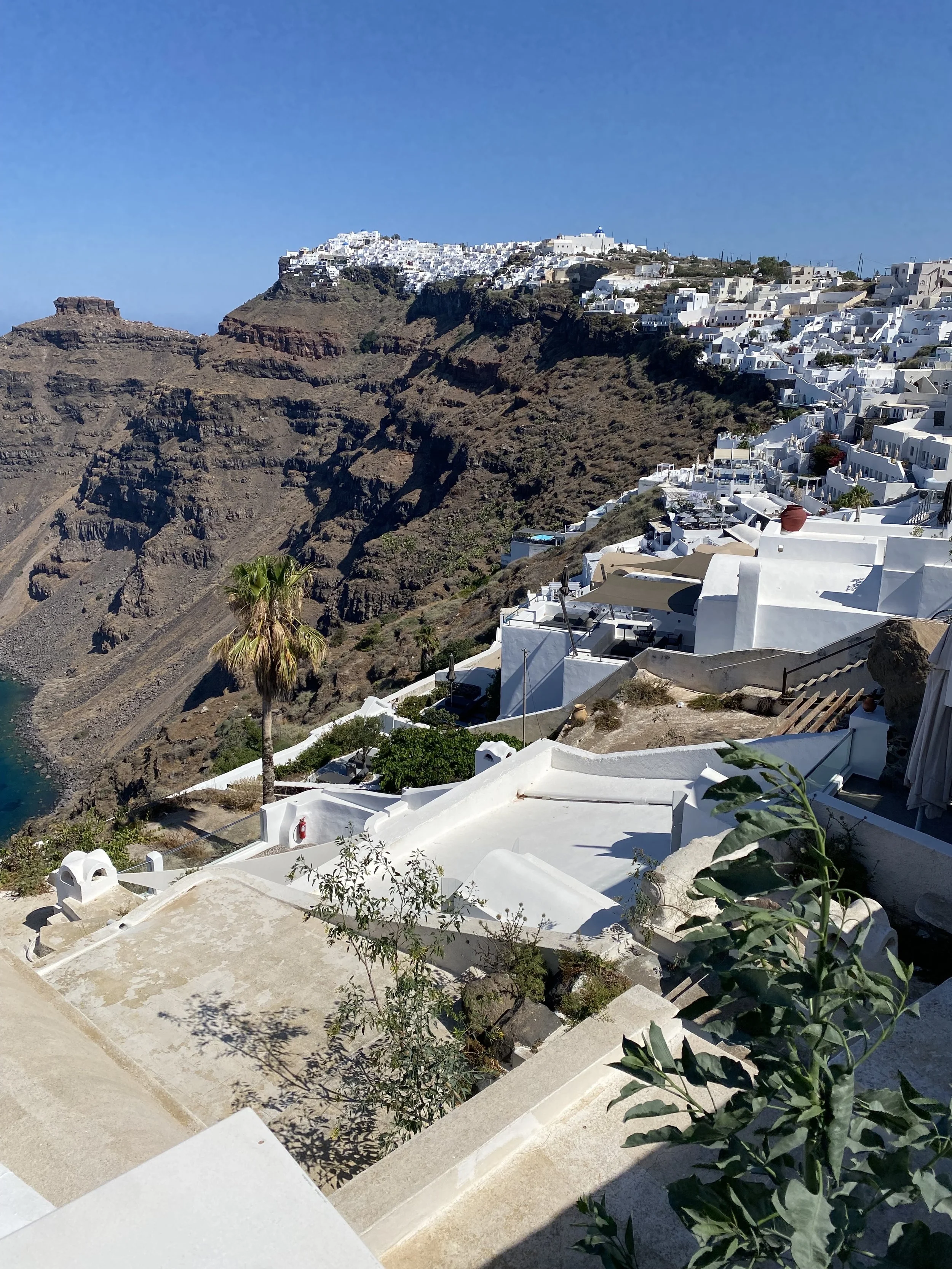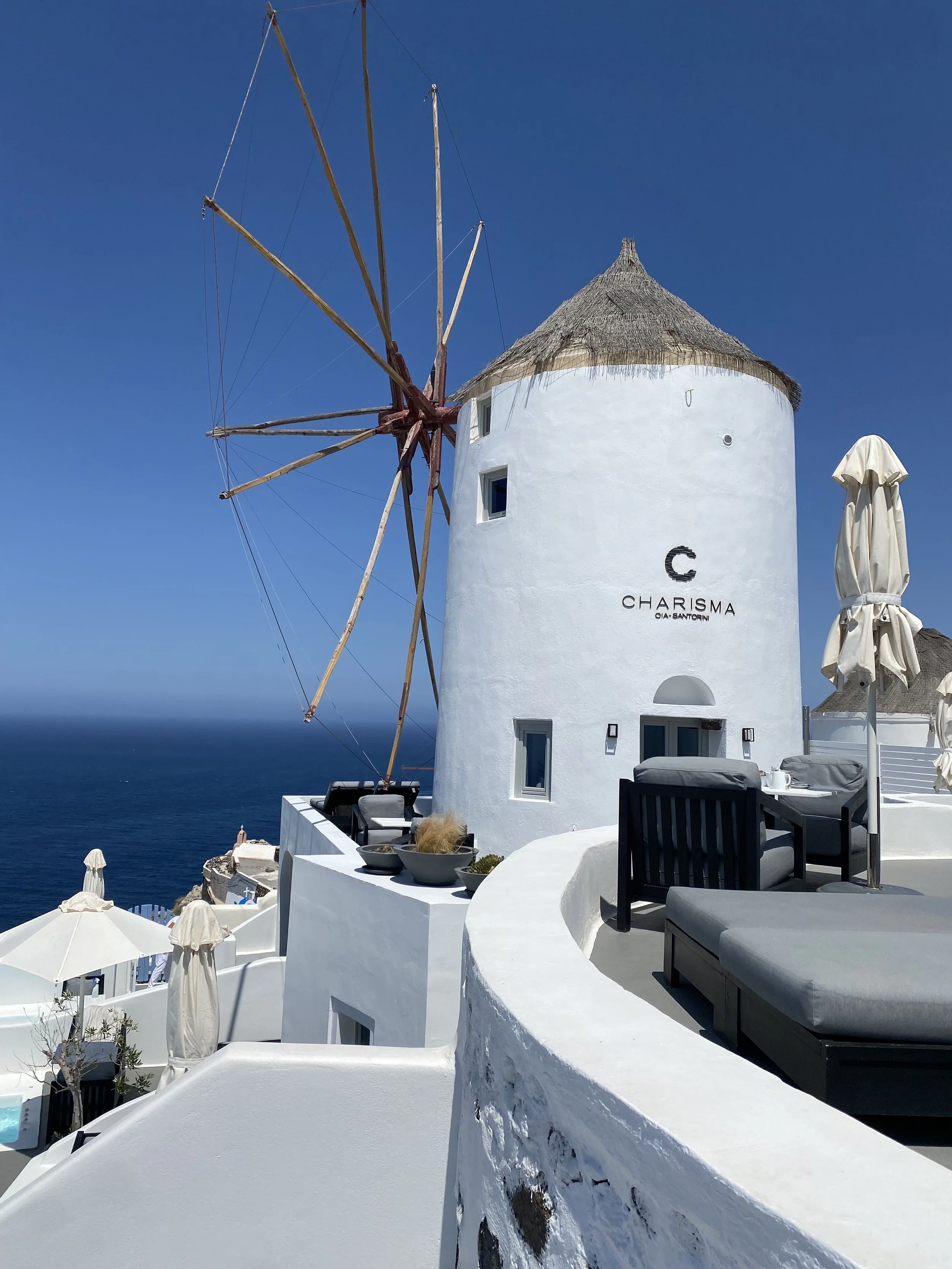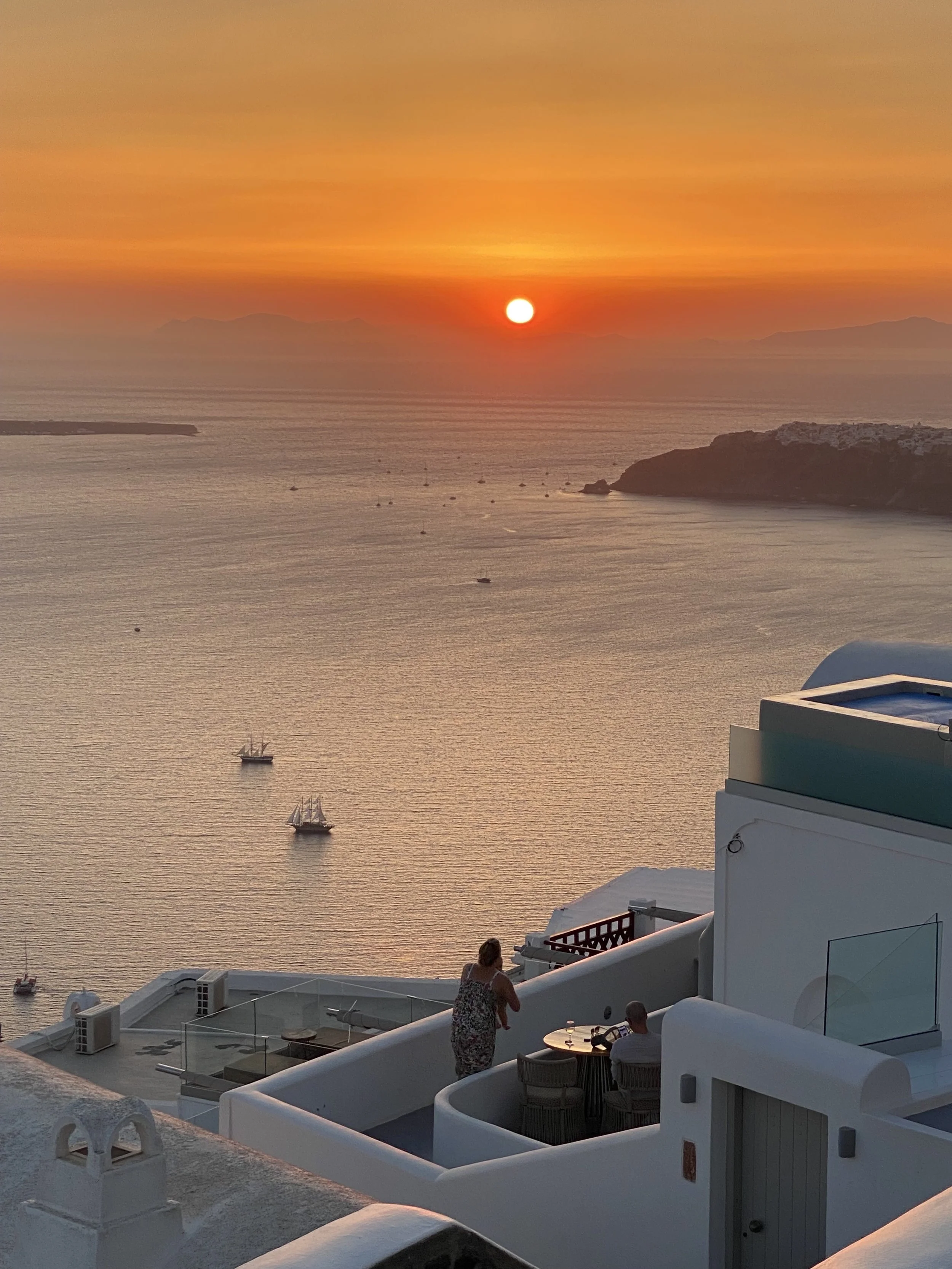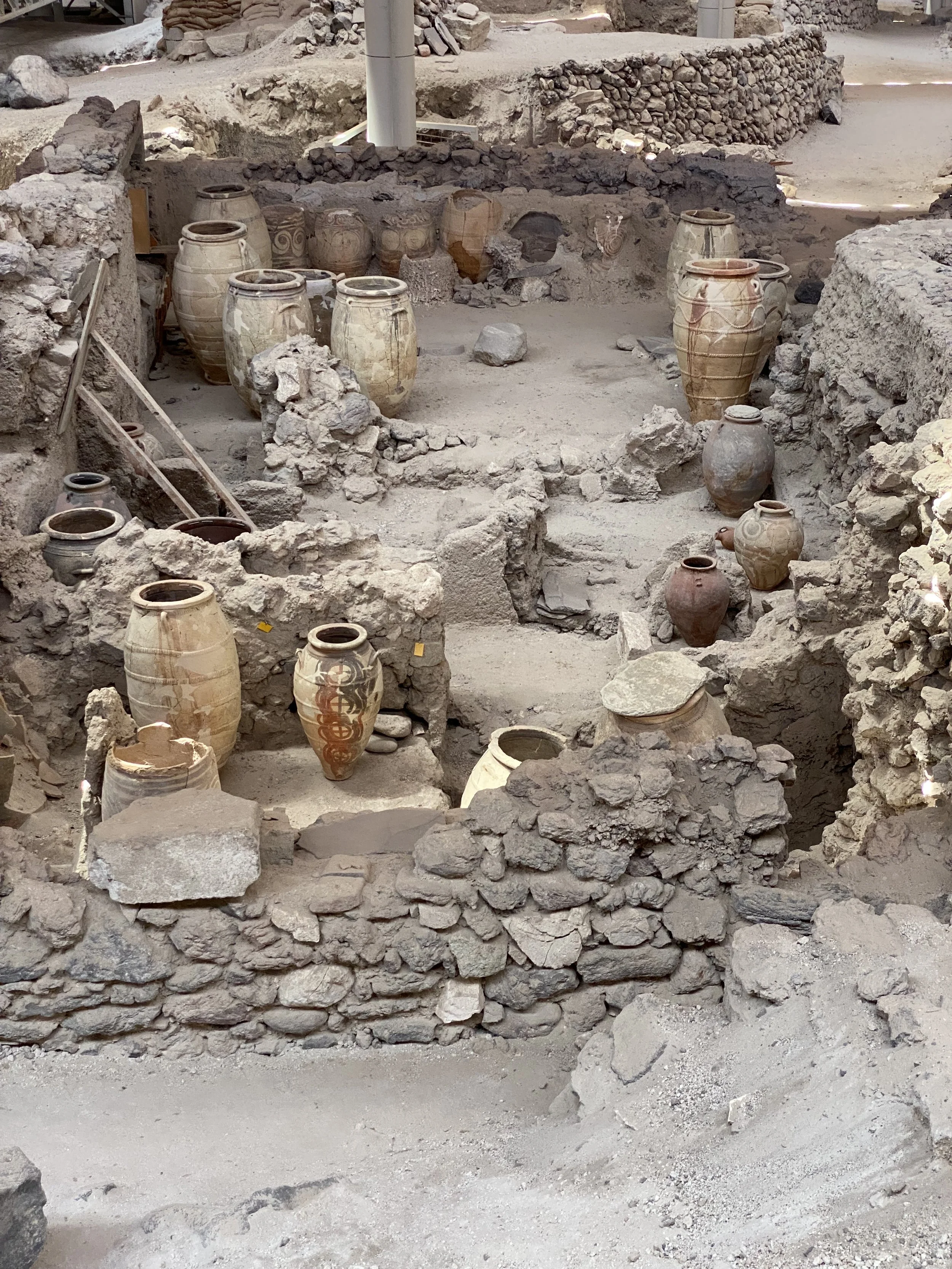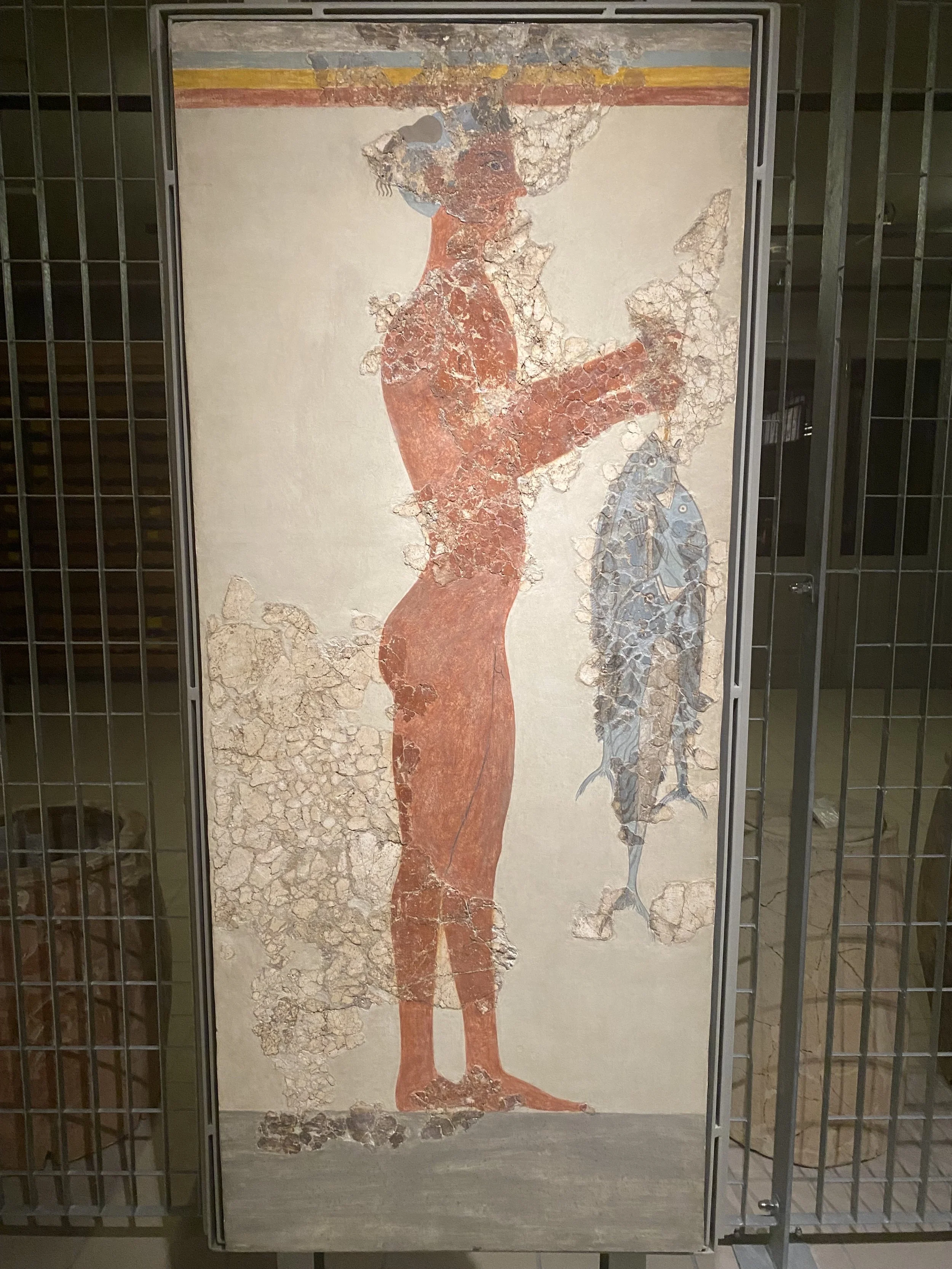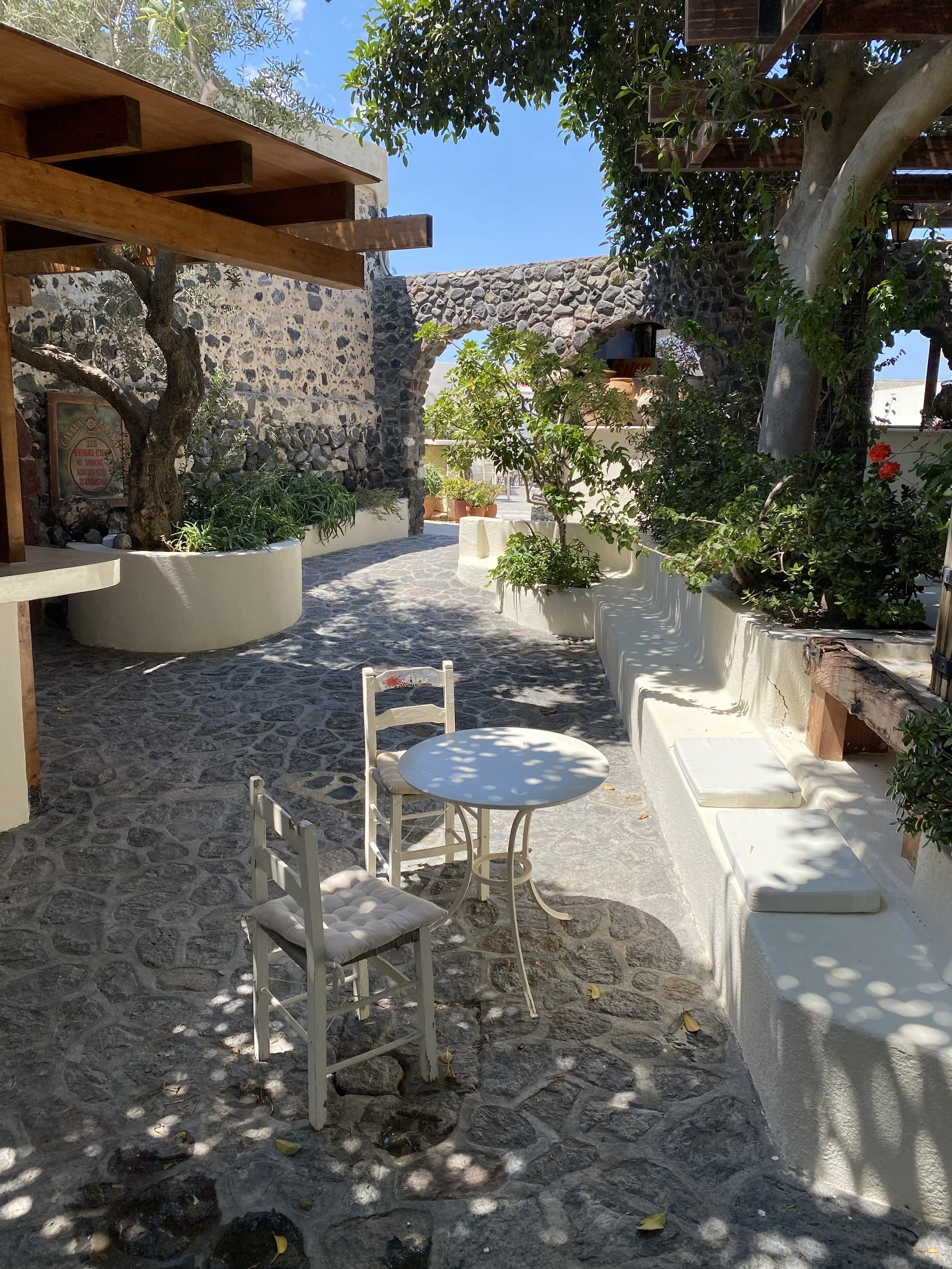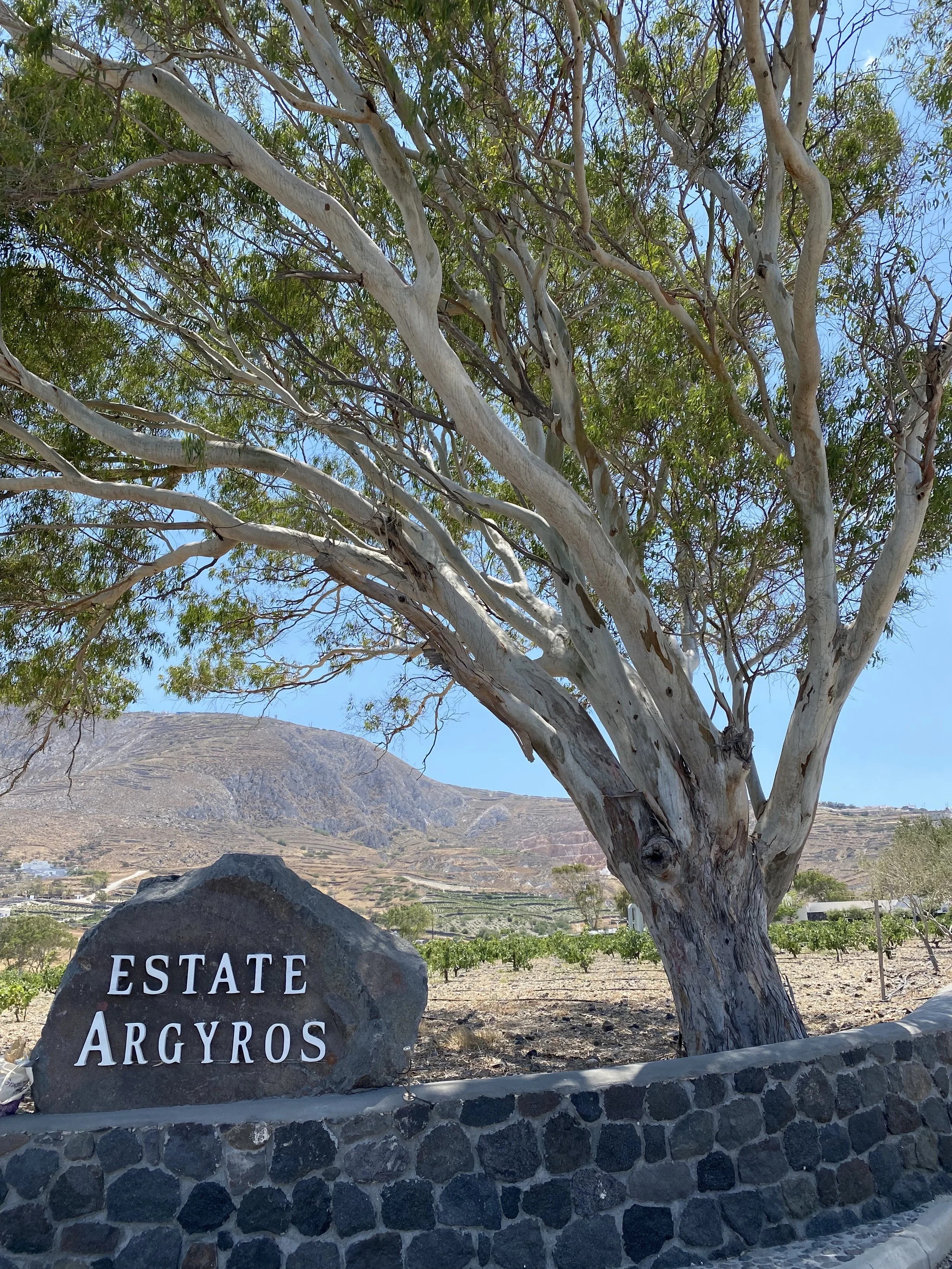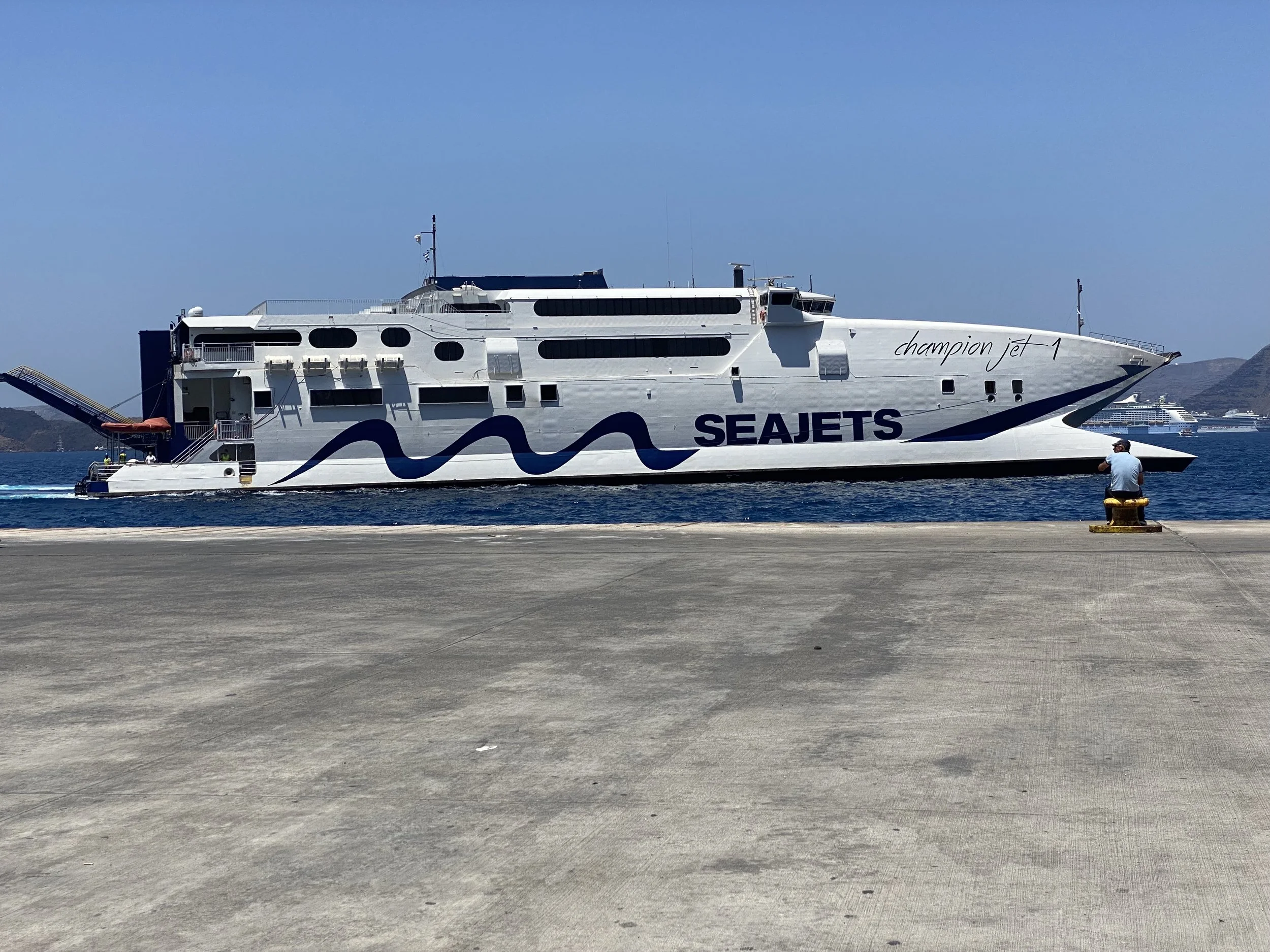santorini
When asked to name a Greek island most people are likely to name the Cyclades group of islands’ jewel, Santorini as their first answer. Even if you have never been there, you know it. You’ve seen the photos of whitewashed buildings with an impossibly blue sky, that glorious view of the caldera. And those sunsets!
You’ve probably also heard about the winding streets being flooded with crowds of people visiting from the cruise ships, where everyone packs out the bars and restaurants with barely room to swing a cat.
But visit at the right time and stay in the right places and you’ll be rewarded with a wonderful experience that you will cherish forever. If you’re there in the shoulder season (April-June, September-October) you should have a fantastic time.
We were there in June and were pleasantly surprised by the lack of people, our apartment complex was half-full and we had no problems with dining in the restaurants we had researched. The transportation around the island was a breeze, though the main bus station in Fira was fairly chaotic, but turned out to be easy to navigate once you understood what was going on.
The most difficult choice you have when you visit Santorini is where should you base yourself?
Fira, the island’s capital is an obvious choice. There’s plenty to see and do, the main bus station is in the centre of town, many of the best bars, restaurants and hotels cling to the caldera’s edge, and the best shopping is there, though the shopping in Oia is more upmarket.
Oia, to the north of the island is another great choice with probably better hotels and restaurants clinging to the caldera, but with higher prices, and it is quite isolated, but that doesn’t put off the day trippers packing out the winding streets. Evenings are best when the crowds have left and guests can wander around, brushing shoulders with the rich and famous.
Neither of these towns have beaches. If that’s your thing then you should head to the east of the island and stay in Kamari or Parissa. Hotels, bars and restaurants line the beachfront, and there is a fun, party vibe to the place.
Finally, there’s Firostefani and Imerovigli, a 15 and 30 minute walk respectively, north of Fira, accessible via the pedestrian pathway along the caldera’s edge. These two villages offer relaxed atmosphere with outstanding views, upmarket hotels, apartments, restaurants and bars, offering a romantic experience.
We stayed in lovely Heliades apartments in Imerovigli. Mother and daughter, Olympia and Georgia, and the rest of the family were so friendly and welcoming. Our split level apartment was lovely, with a small kitchenette with refrigerator, nice bathroom with shower, comfortable bed upstairs in the mezzanine area, a great sitting area on the ground floor, and a terrific terrace offering extraordinary views. We enjoyed breakfast on the terrace each morning, and drinks soaking in the view and sunsets in the evening. The bus stop is a couple of minutes away. The apartments are far enough away from the bars and restaurants, so you will enjoy a peaceful nights sleep. If it wasn’t for the sightseeing, we would have been very happy to have spent all day on our terrace, cold drink in hand, enjoying the view. Maybe next time.
As for sightseeing, Santorini has something for everyone. If you’re an ancient history buff then the ruins of Akrotiri are a must, a Minoan city dating back some 4 thousand years and destroyed by the same catastrophic eruption that devastated Santorini. The ruins are housed under a roofed structure which offers protection from the elements to both the ruins and tourists alike. It’s easy to walk around, the audio guide is recommended. There is a regular bus service from Fira bus station that drops off and picks up right outside. It’s also worth stopping a little longer to enjoy one of the beach front tavernas and have a swim from the small pebble beach.
The same day you visit Akrotiri, make sure you check out Museum of Prehistoric Thera. Here you will find stunning frescoes and artefacts that will help you understand just how amazing Akrotiri was at it’s peak. Big tip: make sure you go downstairs or you will miss the best part.
There are also some gorgeous little blue domed, whitewashed chapels dotted around the island, check out in Fira, the Cathedral of Saint John the Baptist, the Metropolitan Church of Ypapanti, and the Three Bells of Fira. In Imerovigli, the Church of the Resurrection of the Lord, or the Church of Christ. In Oia, the Church of Agios Georgios, the Beautiful Blue Domed Church of Oia (yes that’s it’s name), the Resurrection of the Lord Holy Orthodox Church, and the Church of Agios Nikolas.
The aforementioned Oia is a popular destination, not just for the churches but also for stunning views of the island and caldera. Join the throngs of tourists and wander through the narrow streets, jostling for the best viewpoints, and a place at the many bars and restaurants where you can soak in that view. Other attractions in Oia include the Windmill of Oia, the Maritime Museum of Santorini, and the Castle of Oia. Oia is easy to reach from Fira bus station, or you can walk the Fira to Oia walk, this is a 2-3 hour hike along the caldera and requires a medium level of fitness.
Those of you who are seeking a more authentic Santorini experience should head to Pyrgos in the middle of the island. This is where the locals live, and you can still see people going about their daily business while you wander through the picturesque windy streets. You will find churches, quiet bars and restaurants offering some of the best food on the island, and a castle that you should head for at either sunrise or sunset for wonderful views of the island. The towns of Emporio, Megalochori, and Mesaria also offer a quiet alternative to Fira and Oia, and are worth a visit.
There are also a number of wineries on the island that are worth visiting, plus a couple of breweries. With it’s barren landscape and strong winds you would be forgiven if you didn’t come to Santorini expecting a thriving wine scene. But the Assyrtiko grape variety indigenous to the island has thrived for centuries under the island’s hot sun. This is a dry white wine that is quite unique in taste and flavour, expect a bright, citrusy taste with a finish that reminds you that you are near the sea. The vines grow low to the ground around baskets to give protection from the wind, you will notice them dotted all around the island.
We visited the gorgeous Santo Wines situated on the edge of the caldera above the island’s main port, you can enjoy a tasting while enjoying the view. It’s definitely on the touristy side of things and you will definitely not be on your own but you won’t be disappointed. If you’re looking for a more relaxed experience then you should head to Cavana Roussos. The Roussos family has been producing wine here since 1836, and is an idyllic place, with a small museum and cellar which you can visit. The tasting offered in the shady grounds is terrific with some really interesting wines, you will be unlikely to have tried any of the wines on offer.
There are a few businesses that offer wine tours but these are rather expensive, we preferred to take a look at the various bus routes around the island and work out if they passed a winery or two.
For the wineries Cavana Roussos, Estate Argyros, and the Santorini Brewing Company, take the bus to Kamari, tell the conductor where you want to get off and hopefully he will remember. They are all situated a couple of minutes walk away from each other. Also on the same bus route you will pass the Santorini Wine Museum and Artemis Karamolegos Winery, and then you can either carry onto Kamari beach or return to Fira. The bus to Akrotiri also passes a number of wineries overlooking the caldera including Santo winery and Ftelos brewery.
We ate at some lovely restaurants during our stay. Authentic Greek restaurant Mama Lena in Imerovigli was really nice, friendly staff, good food and inexpensive. Close to the Atlantis Hotel in Fira, you will find the wonderful Naoussa Restaurant with fantastic views and food to match. Our absolute favourite restaurant was Nicolas Taverna in the centre of Fira town, situated down one of the narrow streets. Authentic Greek cuisine, great wine, generous portions and great value for money.
As I have said before, the best way to get around the island is by bus. The central bus station in Fira is the best place to start your journey from as all routes start from there. There is a kiosk at the station where you can try to get information about which bus to take, most likely there will be dozens of people trying to do the same. Best thing to do is locate the timetable that will be stuck on the wall of the kiosk, take a photo, work out where you are going, and then listen out for the calls from the conductors to the various locations. They will tell you which queue to wait in, then when you start to board the bus you will pay, usually €2 in cash, for your ticket to the conductor standing at the door to the bus. It can be confusing at times and you may miss the bus the first time you try, but don’t give up, you’ll soon get the hang of it, and another bus will be leaving in 20 minutes or so!
Arriving at Santorini airport is slightly less stressful, there is a bus but good luck with that. Better to take a taxi or arrange a pickup from your hotel or accommodation, the taxi will be more expensive at around €40-50, though we negotiated down to €30 which is what your hotel should charge.
Our next stop was to Milos island. We caught the bus from Fira to the port, all very easy and straightforward, though make sure you give yourself plenty of time just in case the bus fills up and you have to find another way to get there, ie taxi.
We booked all our ferry tickets with Ferryhopper.com, it is much more straightforward than booking through the often confusing ferry companies websites themselves, and costs exactly the same.

